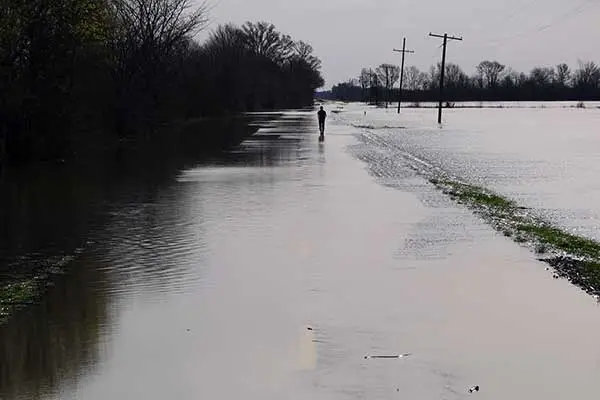With the dramatic collapse in commodity prices over the past twelve months, I find myself talking more and more about what is going to happen with land rents and land values. Generally when the question is posed, I chuckle and suggest a meteorologist could give you a better idea on where the land market is headed than a land broker or appraiser. Land rents, and ultimately land values this fall, will largely be determined by our weather this summer and ultimately how large of a crop we raise.
Based on the current economics of corn and soybean production, the common consensus is that farmers could lose as much as $80 to $100/acre on rented land in 2015 unless we see a substantial rally in the commodity markets. If this holds true, land rents will face significant downward pressure this fall as farmers renegotiate to breakeven levels on their leases.
The natural reaction to land rents falling is that land values will fall in tandem. I’ve spent a great deal of time playing around with spreadsheets to offer my best guess of where land values might settle in with $3 corn. Ultimately if you can tell me where land rents will be this fall, interest rates and the acceptable capitalization rate then I can give you a pretty good idea where land values will go.
Of these three variables, the most significant wild card in this whole discussion is capitalization rates. There is no secret that with the central banks printing of money, combined with the low interest rate environment, massive liquidity has been created. A huge amount of this liquidity has moved into real assets such as farmland and commercial real estate where there is a relatively stable income stream. Much like the equity markets, the multiple people will pay for earnings is at all-time highs and many argue this has created a real asset bubble. So long as interest rates remain low, liquidity is going to continue to look for stable places to put their money and farmland will continue to be the vehicle of choice for many.
As I play around with what could be considered a “sustainable rent” using today’s commodity prices, plug in today’s interest rates and a historical cap rate, I can come up with a pretty compelling argument that land values can fall 30 to 40% from their peak value. The million dollar question – or should I say billion dollar question – is: will land values fall in tandem with commodity prices? For some time, I’ve been trying to find a way to explain why farmland prices are stronger than what farm production economics can support. Thanks to our appraisal and land investment team I finally have some data that supports what we are experiencing in the land market. Our appraisal team has built-out a statewide database for Iowa where we track all land listings as they come on the market.
As of May 1, there were 100 land brokerages, auctioneers and attorneys advertising land available in Iowa. These 100 had a total of 418 land listings in Iowa with 140 these meeting our definition of “highly tillable”, meaning 85% of the acres are in row crop. Our land investment team then sorts through all of the listings in the marketplace to determine where the best value is and they keep a weekly “deal queue” with analysis on these highly productive row crop farms.
As of May 1, our deal queue had 78 farms; 49 in Iowa, 17 in Illinois, 2 in Nebraska, 8 in Missouri and 2 in Minnesota. The average asking price was $8,000/acre, the average gross return/cap rate was 3.47% and the average net return after taxes and expenses was 3.14%.
What’s interesting about this data is that it throws academia and financial spreadsheets out the window. It doesn’t really matter what your spreadsheet shows when the marketplace has more money pursuing farmland than supply available to meet the demand. With 99 counties in Iowa, there are fewer than two highly tillable farms per county available to buyers. Of the 140 tillable farms across the entire state, we are tracking only 49 that we consider the best farms for investment.
Considering the massive amounts of liquidity, low interest rates and the desire from both farmers and investors to own farmland, you can see why farmland values may not follow land rents down.
So what does this all mean? Will land values decline this fall or will they stabilize at their present levels. Most of the land surveys are showing Iowa farmland prices down 11% from their peak. My gut feeling is that land values will remain stable so long as we don’t see a further drop in commodity prices. Further pressure on commodity prices will put a strain on rental rates and could create forced land sales as farmers try to beef up their balance sheets to keep lenders happy. And with decreased rents, investors may get squeamish on the asset class.
As I mentioned earlier, if we grow another huge crop and commodity prices fall there will be significant pressure on land rents for 2016. Time will tell what the marketplace deems an acceptable cap rate. If investors are willing to accept a 2% to 3% cap rate, we could keep land values at their current levels in a lower commodity price environment.






